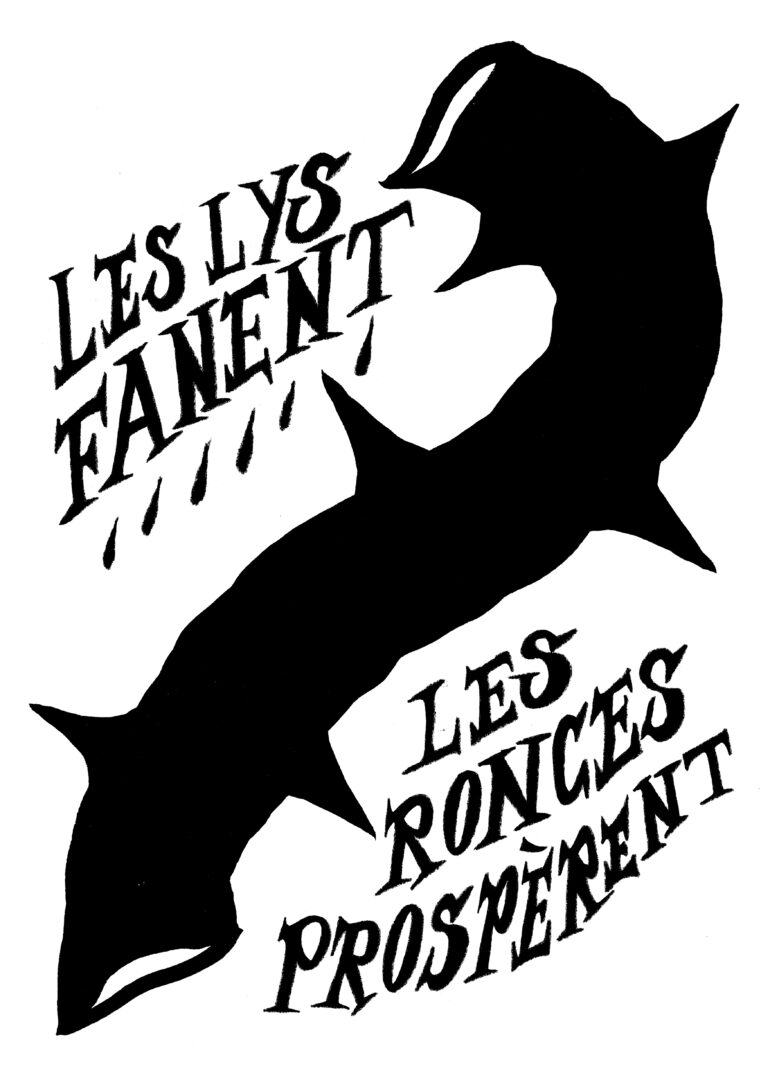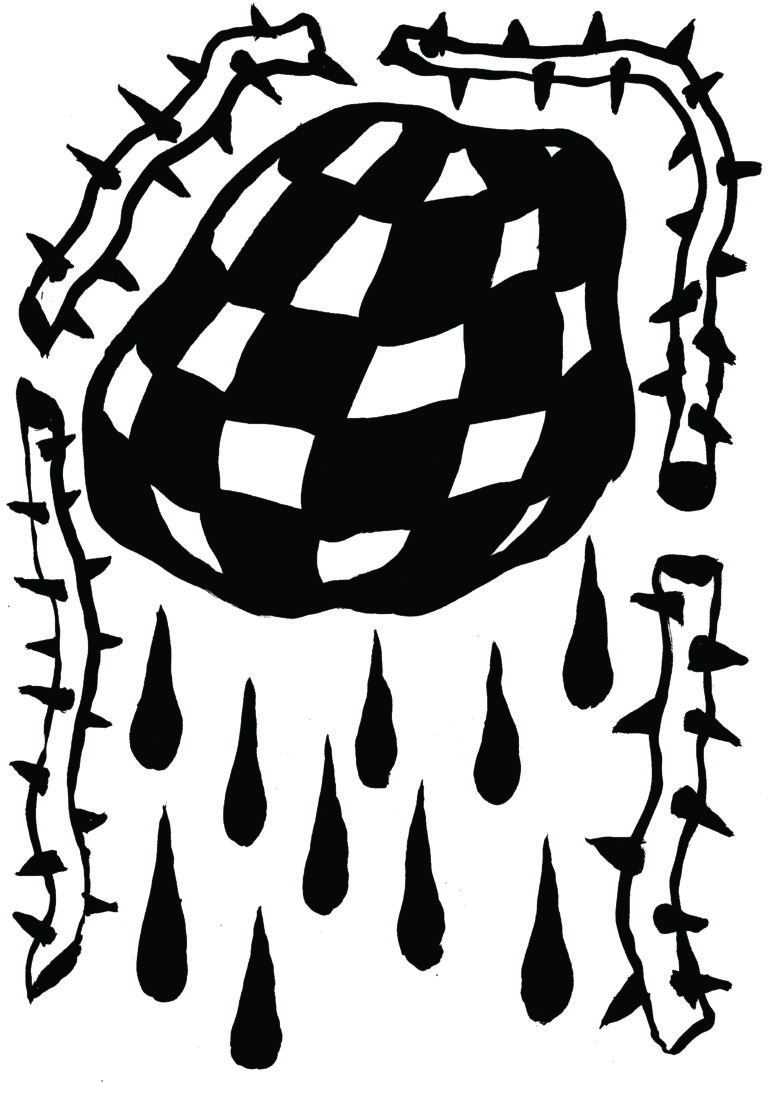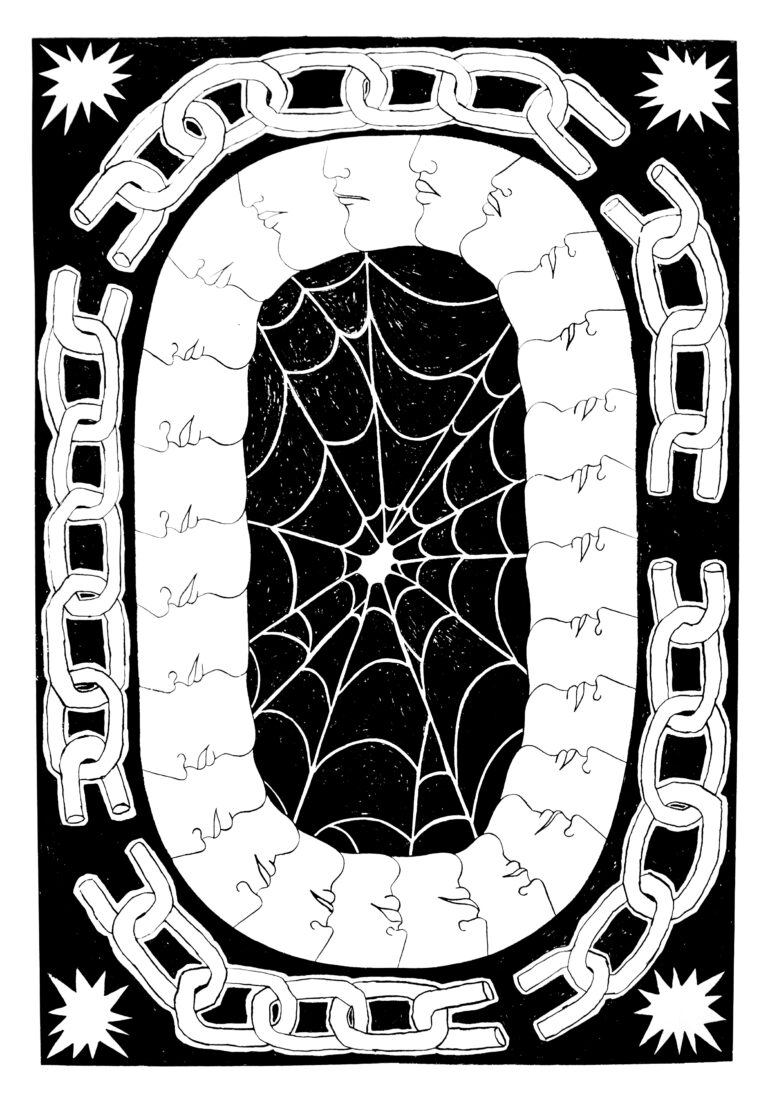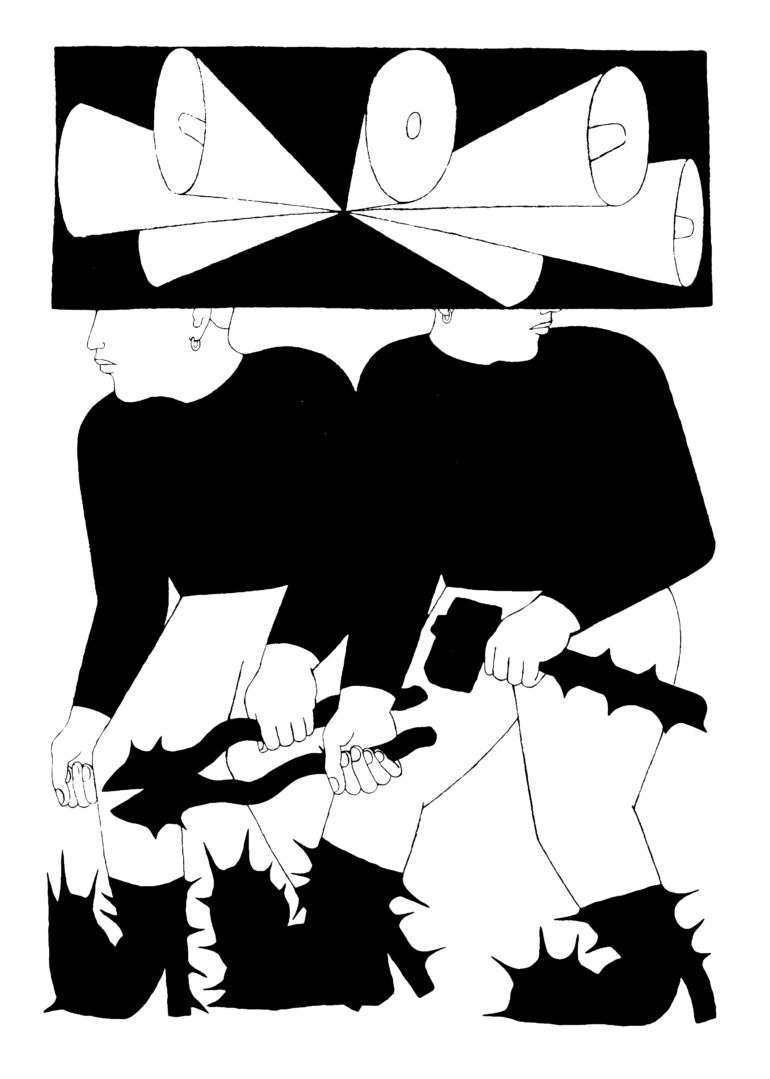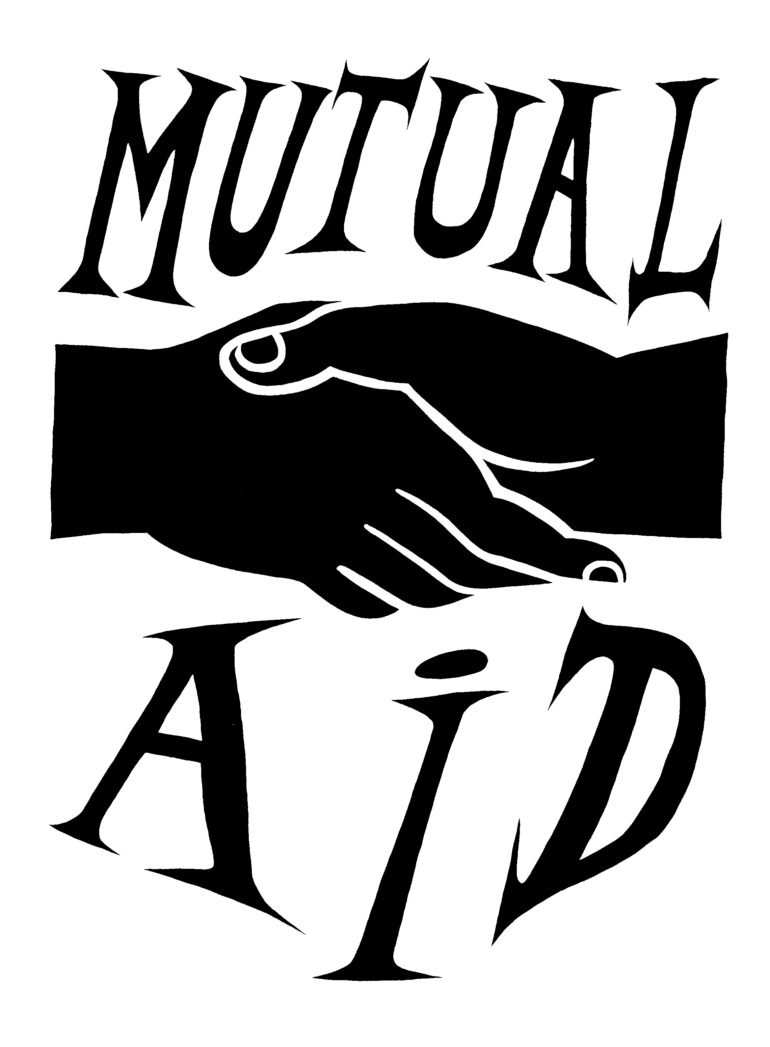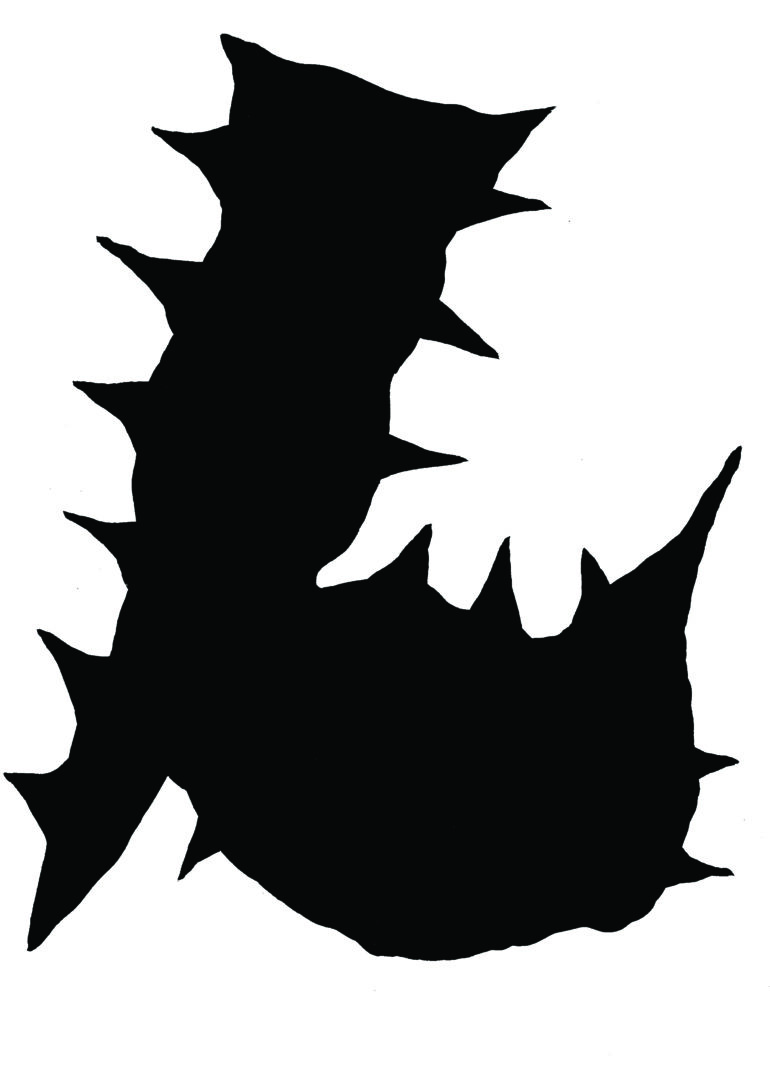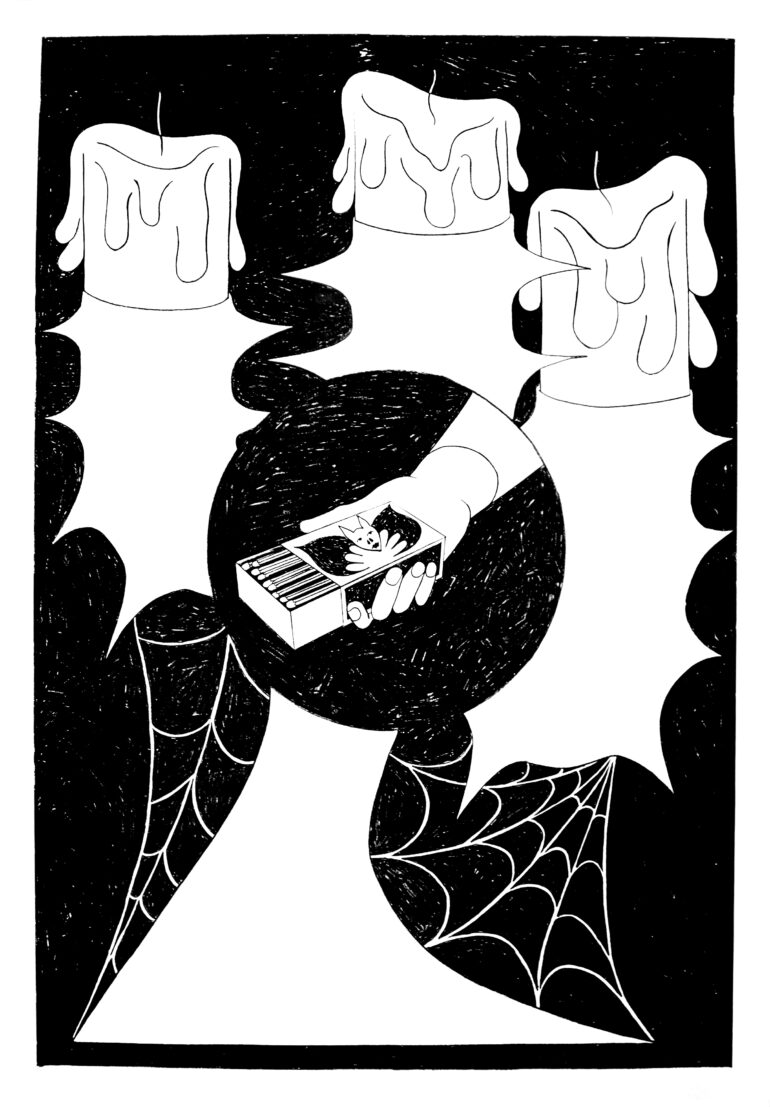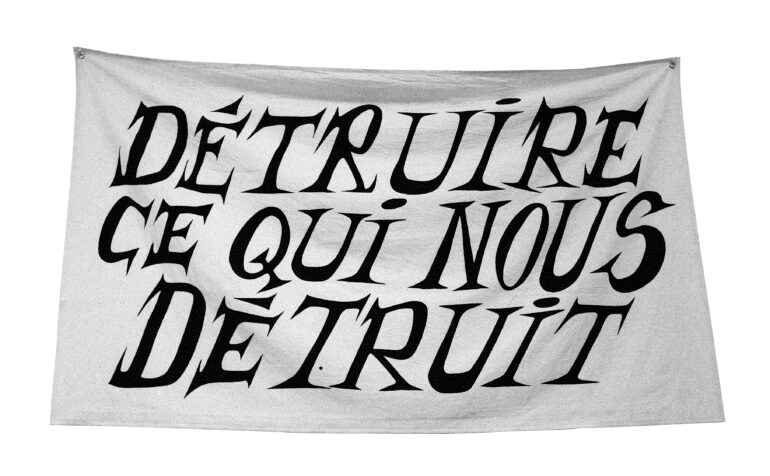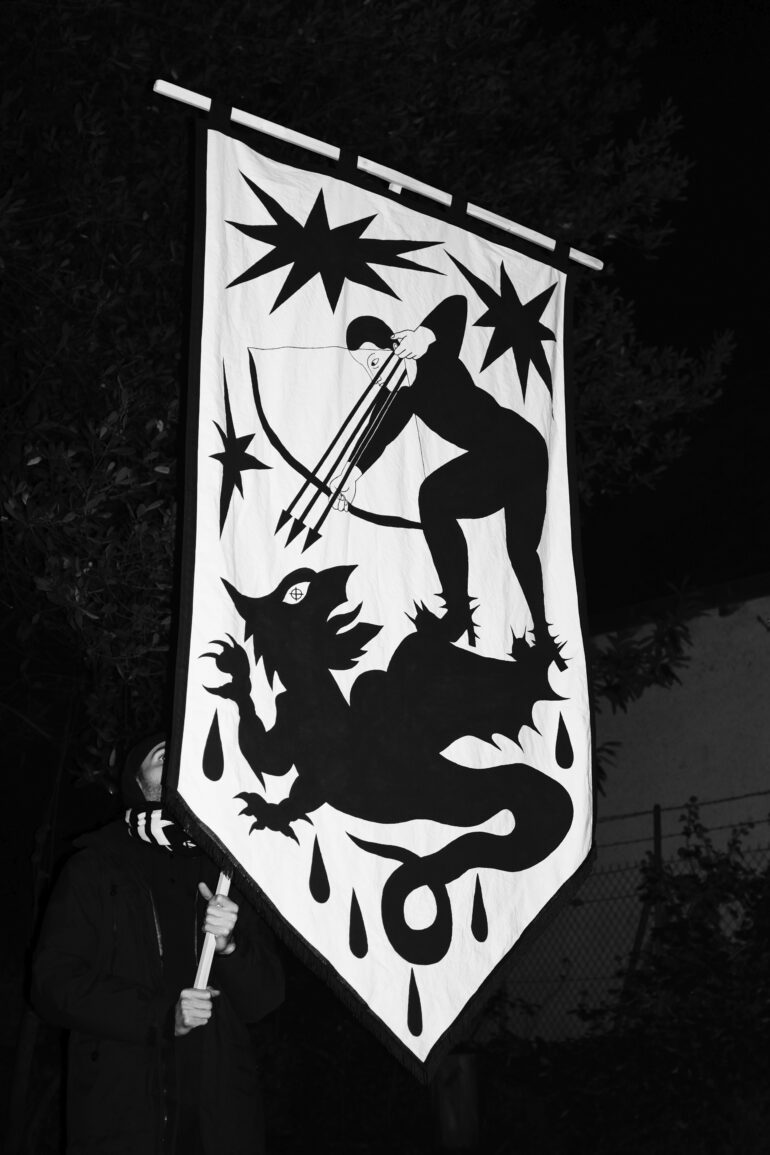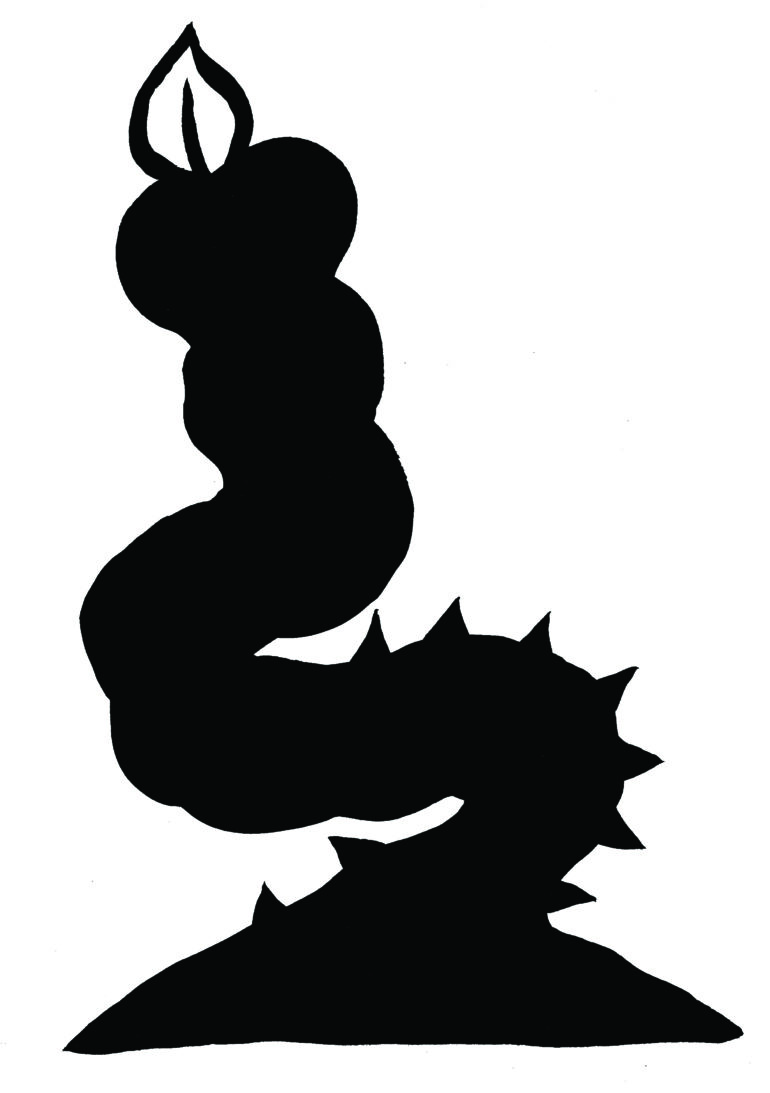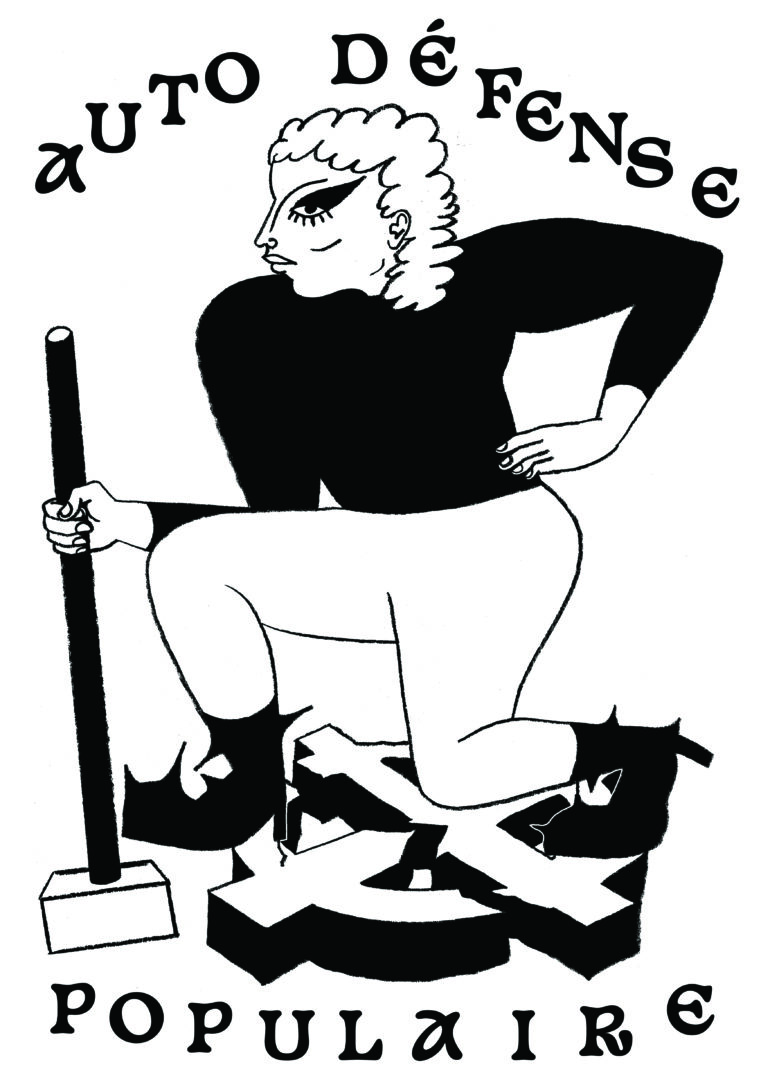ATELIER MCCLANE
For this issue, we took the road towards Saint-Brieuc! It is in the Brittany’s coasts that the sublime “Atelier McClane” duo operates, also responsible for the activist fanzine “Champs de Ronce”. The political spirit of the zine is as fine as it is clear-cut, both libertarian and anti-fascist, and always served by impeccable graphic work. The floor is given to Julie and Hugo, who we thank for the original cover of this Karton #14!
| By Polka B – Translation by NinoFutur.

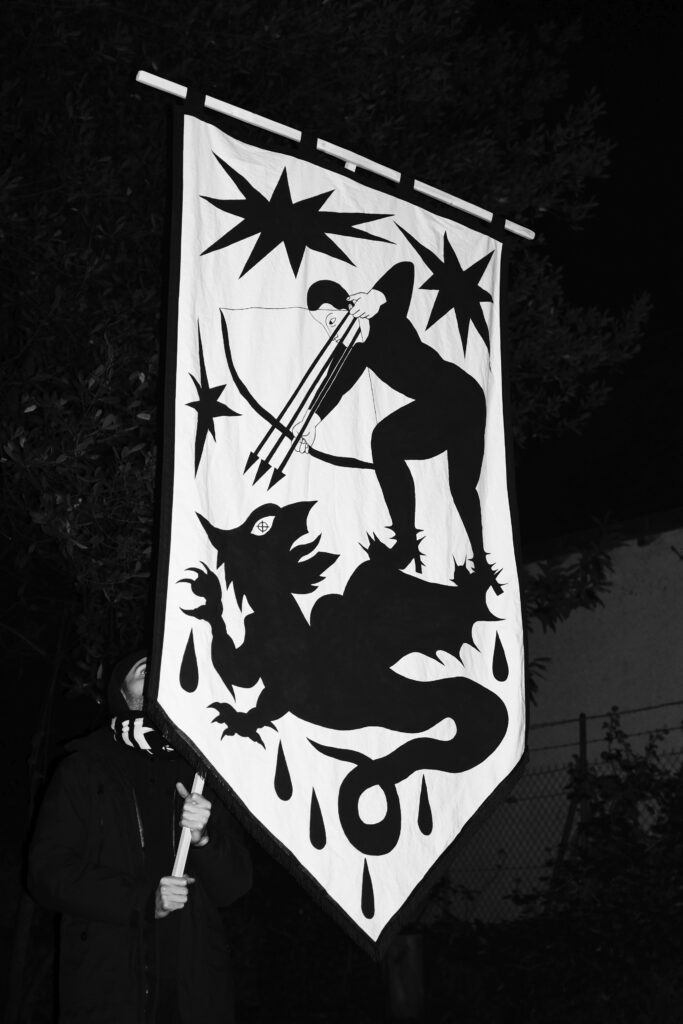
Could you introduce yourself individually? What is your artistic background, related or not to fanzines?
Hugo : I’m Hugo [he/him]. I have always drawn since I was a child, and unlike my friends I never stopped. It then became my full-time activity. I have a fairly classic background as a young, middle-class white man, who lived in not too remote cities like Strasbourg and Rennes. I ended up in visual arts college.
Then I went to Fine arts in Dunkerque, and when I came back to Rennes I met Julia. On a set started working at that time. I discovered fanzines through hardcore punk because I hung a lot at gigs.
Julia : I’m Julia (They/She). I grew up in the countryside with more difficulty having access to concerts and a “scene”. I also attended art schools in Orléans and Rennes.
I think I was already making fanzines without putting a name on it! I was doing DIY things by my side without thinking about how to diffuse it. When we started hanging out together, we naturally landed in this environment
H : At schools, they wanted to put us in boxes. In what “arts” were supposed to be. Making zines, for us, was reacting to this basic postulate.
Above all, we wanted to create our own stuff and show it to people for real. Things that are super affordable and modest in their form. Making them and broadcasting them by ourselves was very liberating. No need to be legit!
You crossed your artistic universes in 2013. How did Atelier McClane born and why this name?
H : The beginning of our work also corresponds to the beginning of our relationship. We spend a lot of time together and we love to draw. It seemed obvious for us to start this job within four hands.
Initially, it was in the form of an “exquisite corpse” with shared sketchbooks. Gradually, we evolved this collaboration which now takes the form of a dialogue. These are our individualities which express themselves among themselves. At the beginning it was still in reaction with school.
We wanted to do something less “ego-sided”, more alternative, artisanal. And the name of our workshop refers to a famous action film from the 90s, with the c
John Mc Clane !
H: That’s it (Laughs)! In the Die Hard movies.
J: We didn’t have much inspiration. And at that time, we were watching the Die Hard trilogy. Well… we know it’s the name of a cop tho!! In the end, we thought it sounded pretty good, so it fitted.
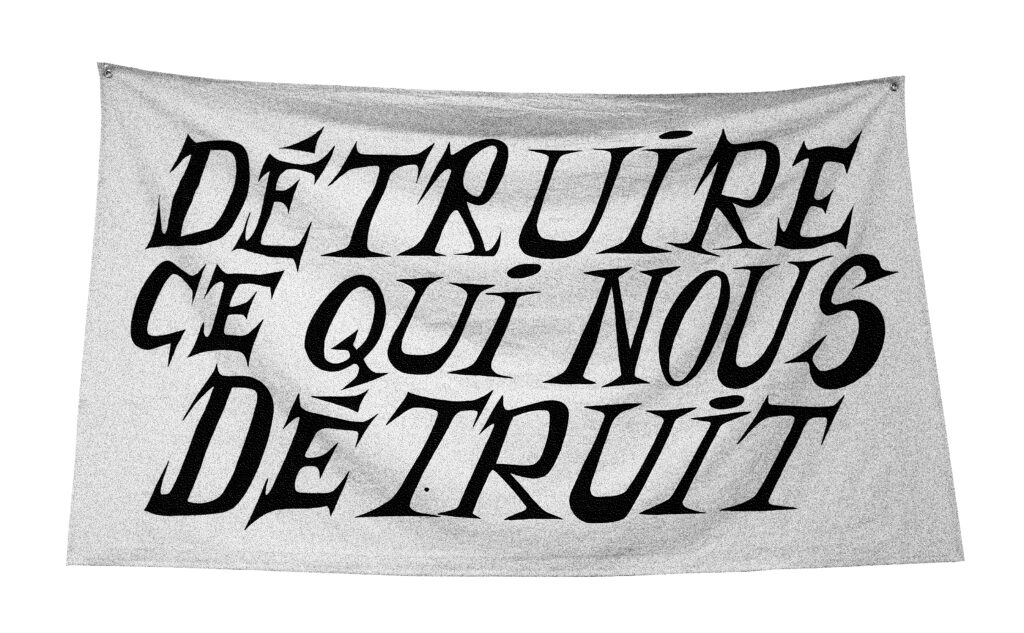
Your artistic duo is now 10 years old. How do you see its evolution?
H: It has evolved a lot! We started with monsters, gory things…
J: At one time, trashy and outrageous things had a strong impact on us. We were very influenced by the work of Le Dernier Cri, but we ended up getting tired of it.
Finally it didn’t suit us that much.
The more years go by, the more your work seems to become refined. As if you were looking to favor the graphic impact of a more direct drawing.
H: That’s right. This goes hand in hand with our politicization. In our first drawings, we sought to produce a complex discourse about saturation of the space, with as much details as possible.
Now that our thinking is clearer, we tend to move towards simpler compositions.
“And it is all of the different paintings that will carry a narrative to nourish a subject. We want it to be clear and impactful. We only produce black and white. We don’t do textures or shades. We don’t play with lights.”

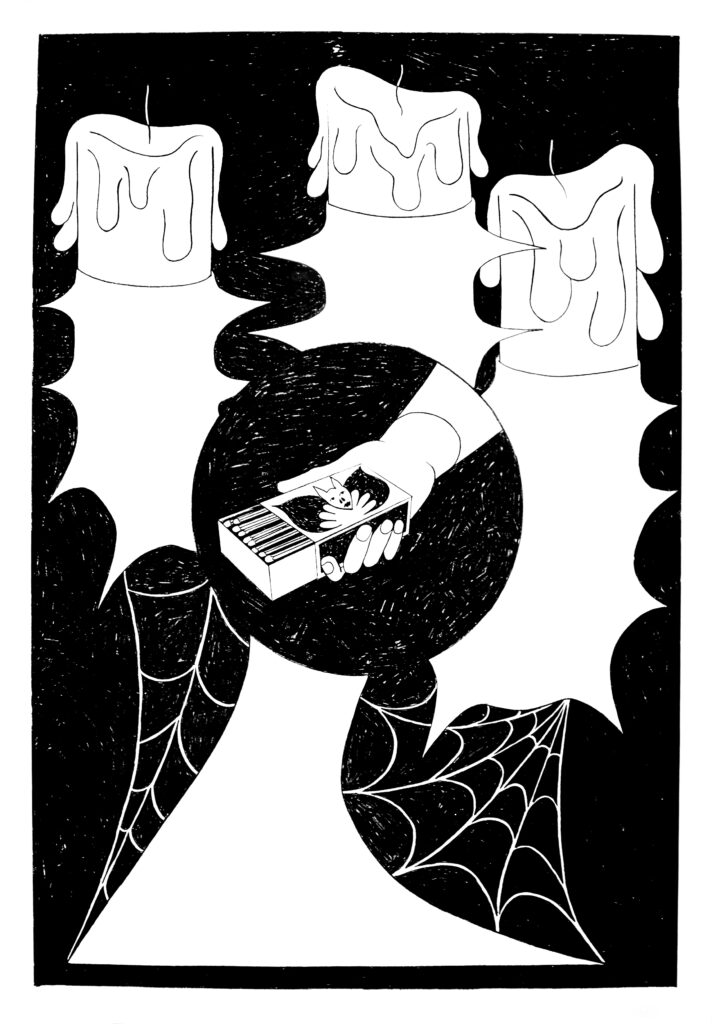
Why this absence of colors, this refusal of gradient? Does this attachment to black and white come from your DIY background?
J: I think so. Black and white displays a kind of radicality which is unbeatable.
H: DIY is also a (more or less calculated) calculation of saving resources. Sometimes we do color, because the RISO printing technique allows us to print very simply. This gets to the point. As if we were working in black and white.
You sometimes exhibit in so-called “institutional” places. Is it important for you to bring this DIY type of arts to these kind of places?
H: For raising awareness clearly. We still made the choice to work with structures that fits to our ethics tho. This is why we place relatively few orders. We do not participate in communication campaigns. On the other hand, we clearly suppose to bring political elements into the more institutional artistic environment. There are too few.
“Conversely, in more politicized places, the visual proposals seemed quite stereotypical to us. We are trying to shake up the codes a little, by our means, on our scale.”
We observe that the visual codes of the alternative movement are quite duplicated. This so-called “free” movement, where none could feel capable of freeing oneself from already existing references. But it’s not always the case. It is not difficult enough to break away from the aesthetics of Dernier Cri, which has an influence on an entire generation but which struggles to renew itself.
J: That’s true. We can never reject those influences, because they remain important to us. But when you start to question feminist positions, some of Dernier Cri authors are problematic. If being subversive means drawing guys torturing girls, I don’t agree. This is no censorship, but I could no longer read works without being disgusted.
Older generations should reconsider this a little.
H: There are real aesthetic “chapels”. Which relatively never cross themselves. And even if they develop within an alternative scene, they tend to standardize.
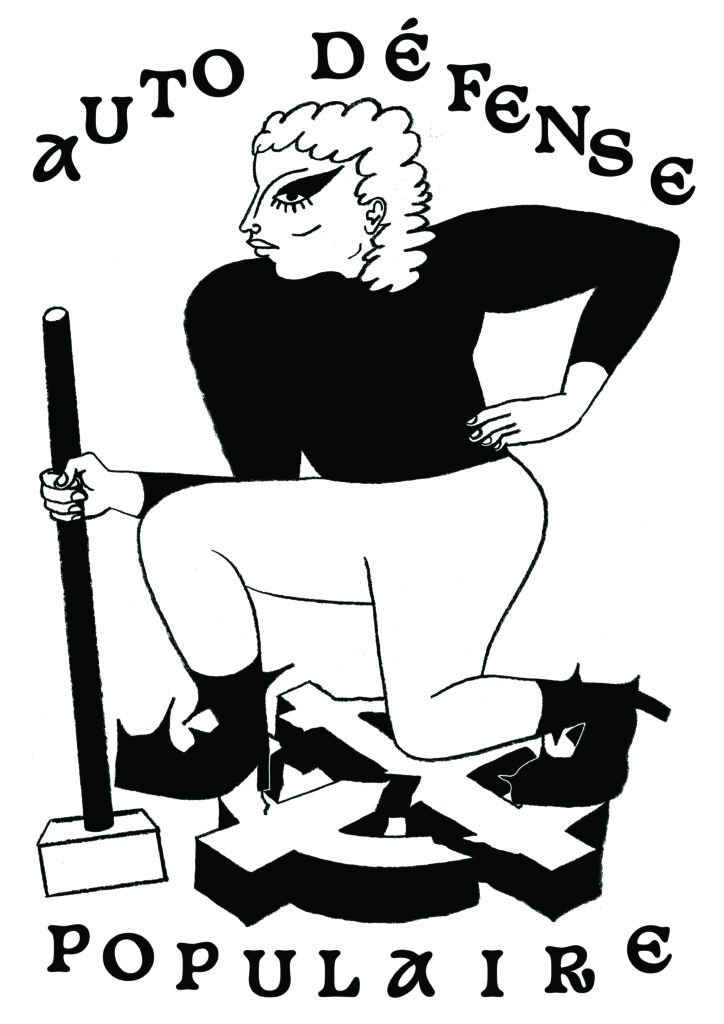
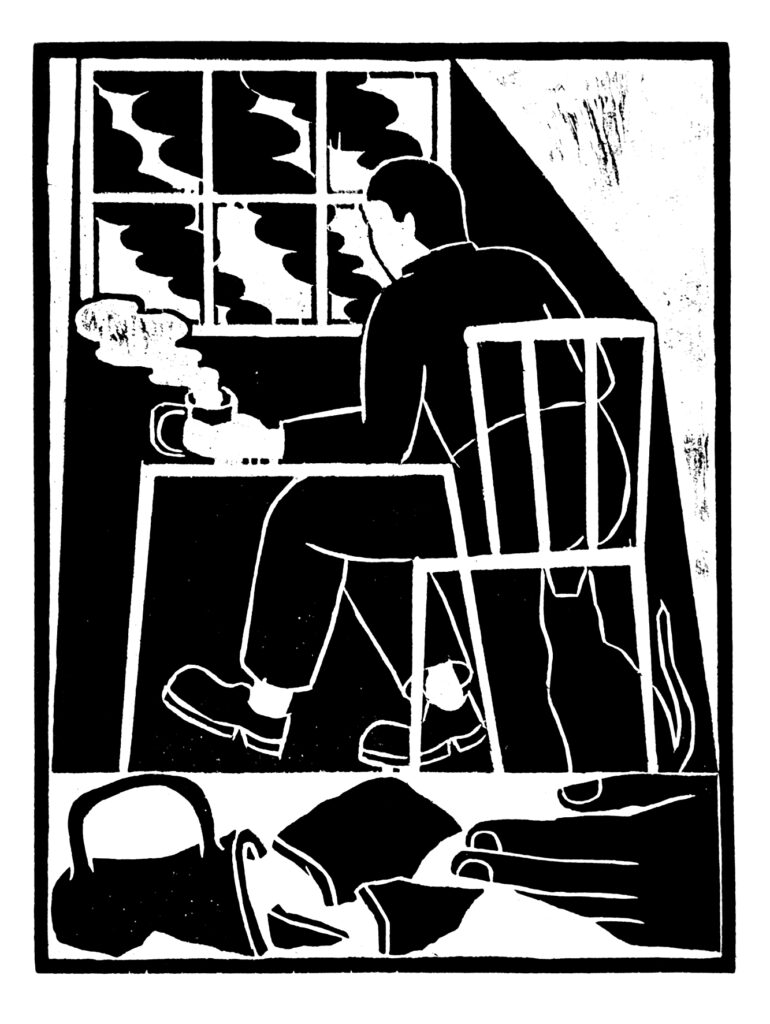
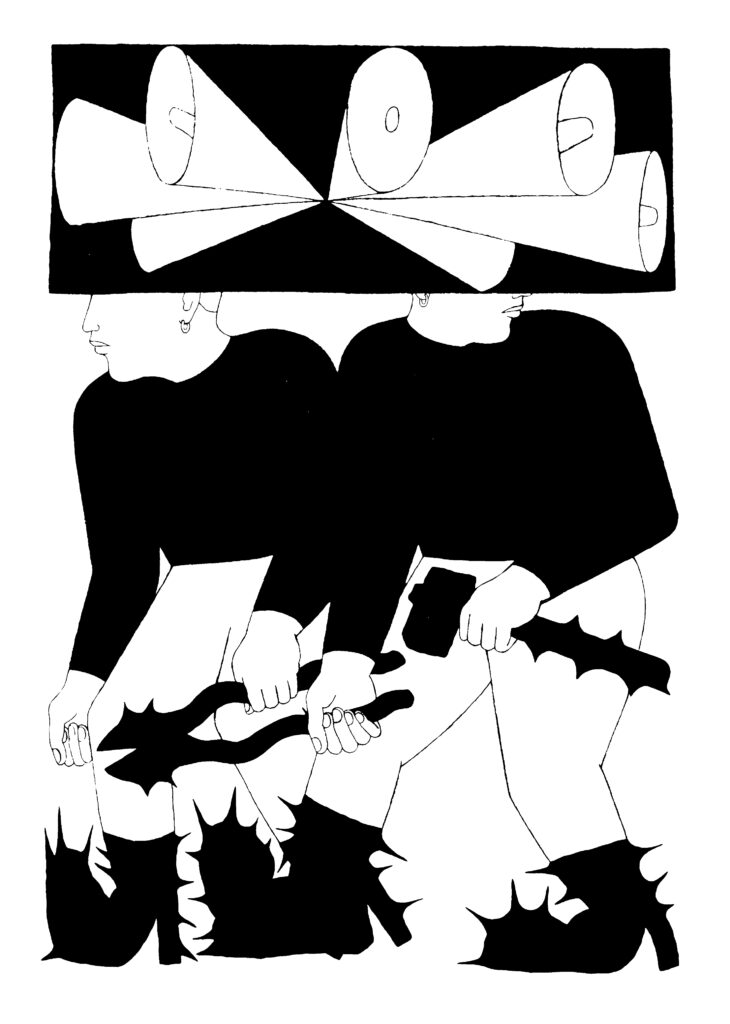

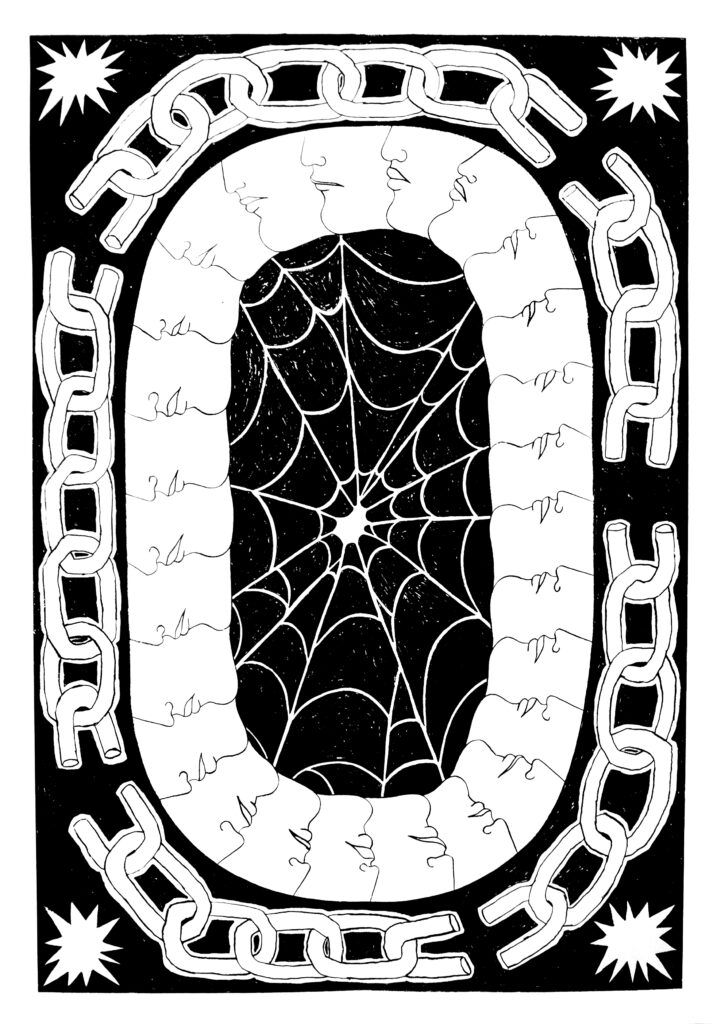
You are very invested in self-publishing and small press. What motivates you to continue releasing so many high quality fanzines?
(We know that it takes lot of time, and that it doesn’t yield much!)
J: This medium is synonymous with freedom.
Doing everything from A to Z is magnificent. It’s the best medium concevable for expressing yourself and spreading ideals.
Personally, I have never found better!
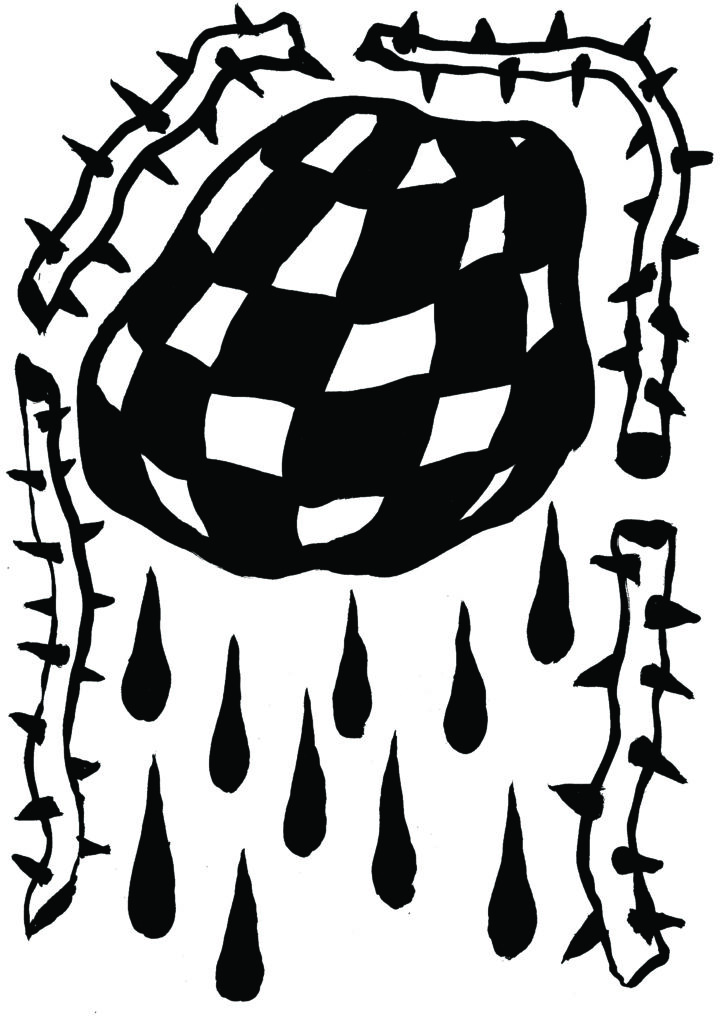
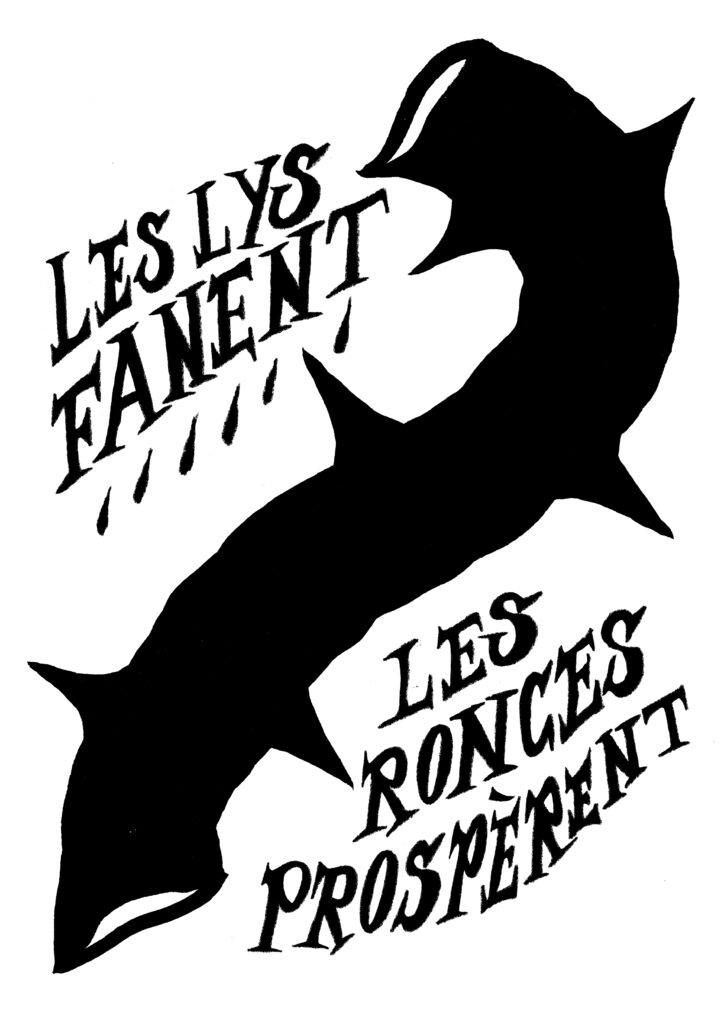
How would you define your fanzine « Champs de Ronces »?
J: It’s a militant journal. Last year during the protests against reform for pensions, we found people as motivated as us!
We got started in a fairly simple way by a call though on our network. We received some great contributions.
Publishing it every month was difficult! Now we release it every two months. We have maintained this pace for a year. And it’s cool!
H: Initially, we wanted to distribute it at demonstrations. But St Brieuc is less active than Rennes! Today, it is mainly used to support anti-rep funds, in a slightly broader perspective. The newspaper is inexpensive to produce. That’s the whole point of the support! This allows us to maintain free pricing, except for bookstores.

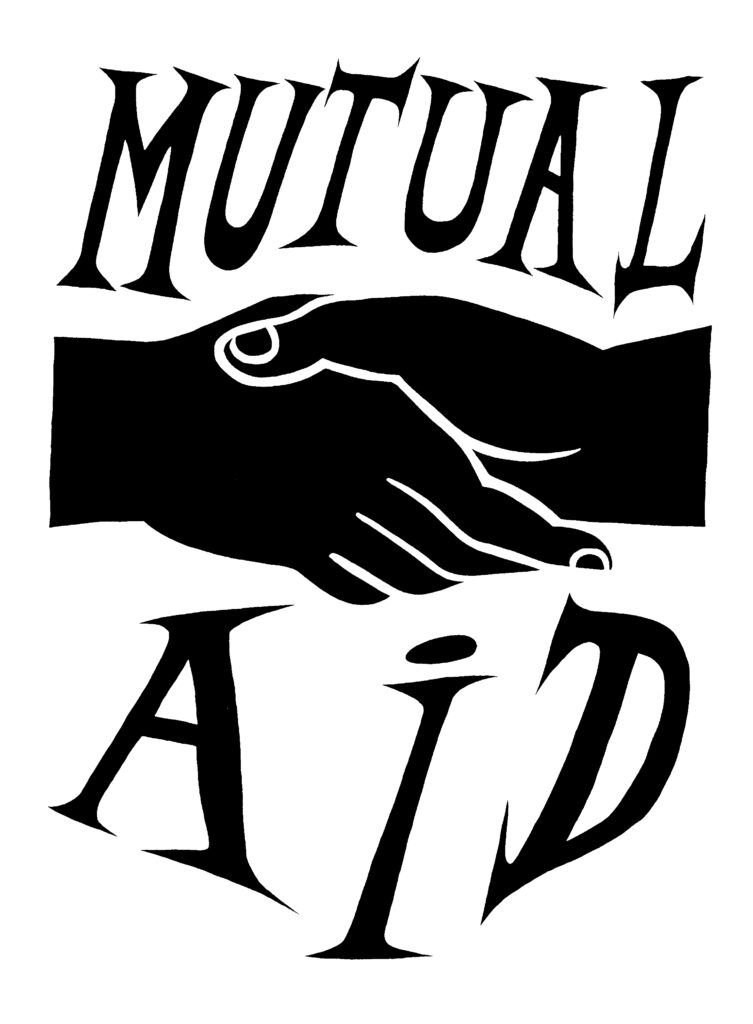
What are your plans for the future?
H: Continuing to politicize everything we do. There is a real urgency with the rise of fascism and far right. It is a choice as much as a necessity. The situation is truly worrying.
We want to keep this radicality. This strongly influences our works and images.
What are your current music listenings ?
J: We’re not original and very chauvinistic so we’re going to say Syndrome 81 (Laughs)!
H: We recently discovered the “Dungeon Synth” scene. It’s pretty weird and but cool! This mixes medieval music and ambient electronic sounds.
J: You have to listen to the Youtube playlist “The Dungeon Noise Cavern”. As we are fans of heroic fantasy this gives us good background music to work with!

